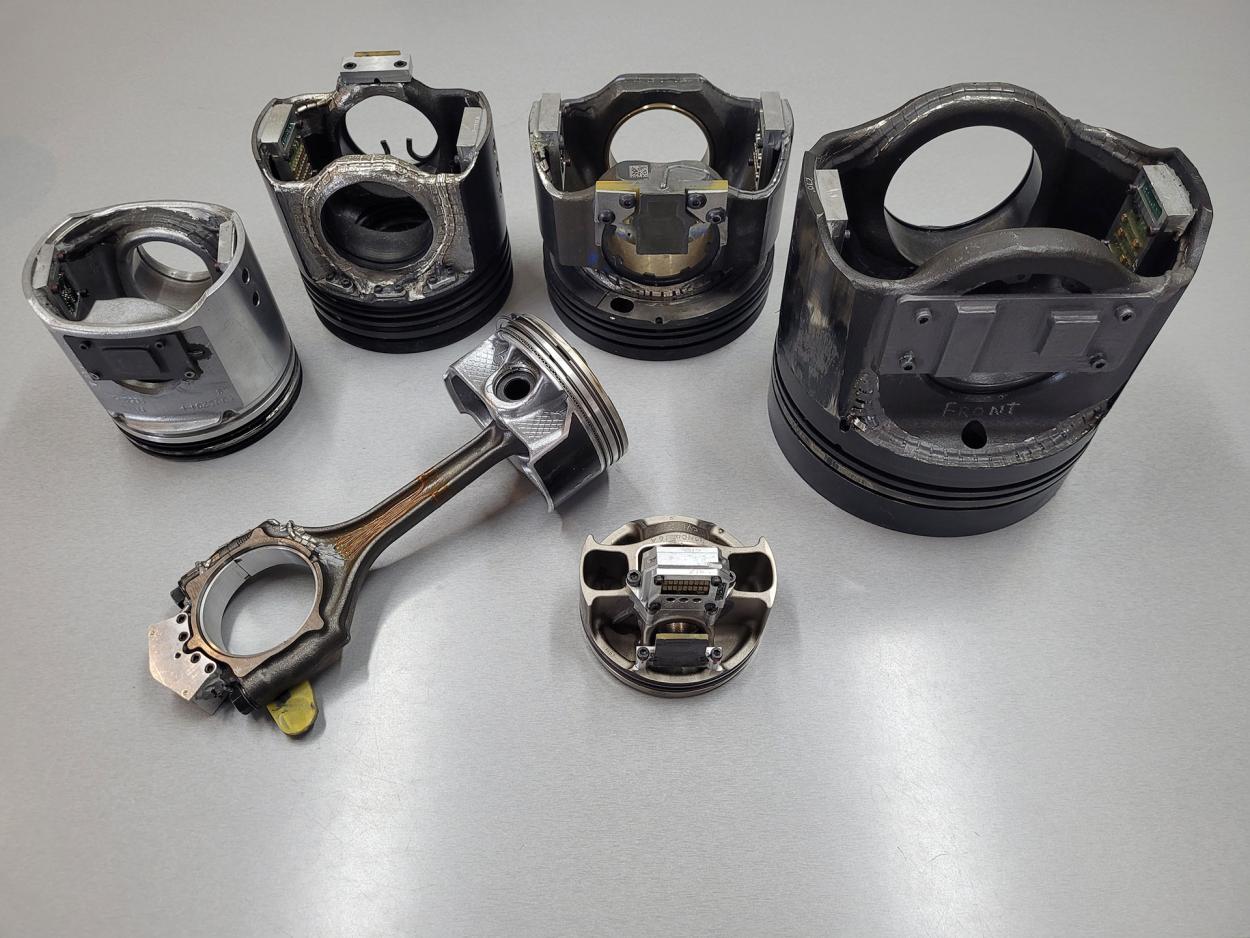
Engine Development for Burning Alternate Fuels
Diesel engines have long been a major power source for transportation, heavy trucking, off-road machinery, power generation, large marine vessels, locomotives, and more. In recent years, as an accelerated global effort to reduce greenhouse gas emissions, diesel engine manufactures around the world are investing a lot of research and development in the use of alternative, carbon-free fuels such as hydrogen, ammonia, methanol, and ethanol.
What makes the architecture of the diesel engine so unique is that with minor changes to traditional designs and hardware, they are very “fuel flexible,” and can maintain their low-speed, high-torque performance while burning these alternate fuels.
One of the challenges for the engine engineers making this transition to burning alternate fuels, is in the power cylinder where combustion occurs. New piston designs need to be tested and evaluated for the alternate fuels impact on piston metal temperature and piston ring performance.
IR Telemetrics Testing Tools
IR Telemetrics, Inc. has been providing the necessary tools for engineers to evaluate piston designs for over 30 years, and is currently supplying wireless measurement systems to their customers to measure high speed piston surface temperatures, embedded temperatures, ring land pressures, and vertical ring motion on diesel engine pistons burning alternate fuels.
In the case of piston temperature, IRT has developed their own high-speed thermocouples for measuring surface temperatures on the crown of diesel pistons. These thermocouples along with embedded thermocouple locations, when combined with their inductively-powered Microwave Piston Telemetry System, give piston engineers the critical real-time piston temperature data needed to validate their thermal models as well as aide in the final calibration of the engines.
In the development of machinery components, like pistons in a diesel engine, there often evolves a need to make a measurement for which a transducer is not available in the marketplace. The vertical motion of the rings on a diesel piston is a good example, since the development engineers need to know how well the piston rings are sealing combustion gases to minimize blow by.
Driven by the desire to meet all the measurement needs of their customers, the engineering staff at IRT went to the drawing board and developed a miniature, non-contact inductive motion sensor which could be installed in a piston ring land. This combined with IRT’s Microwave Telemetry System, can transmit vertical ring motion measurements in a running engine.
This measurement, combined simultaneously with a ring land pressure measurement, allows engineers to both validate computer models, as well as compare ring pack designs and cylinder wall finishes to reduce blow by.
Additional measurement systems for pistons available from IR Telemetrics, Inc. include secondary piston motion, pin motion, pin rotation, pin strain, pin temperature, rod strain, rod bolt strain, rod bearing temperature and oil flow through the rod.
Through their commitment to new measurement technology, IR Telemetrics will continue to assist the OEM’s well into the future of the diesel engine development as an environmentally friendly source of the desired low-speed, high-torque that powers the world in so many applications.
Contact IR Telemetrics to learn more about the measuring technology and solutions available for diesel engine development.